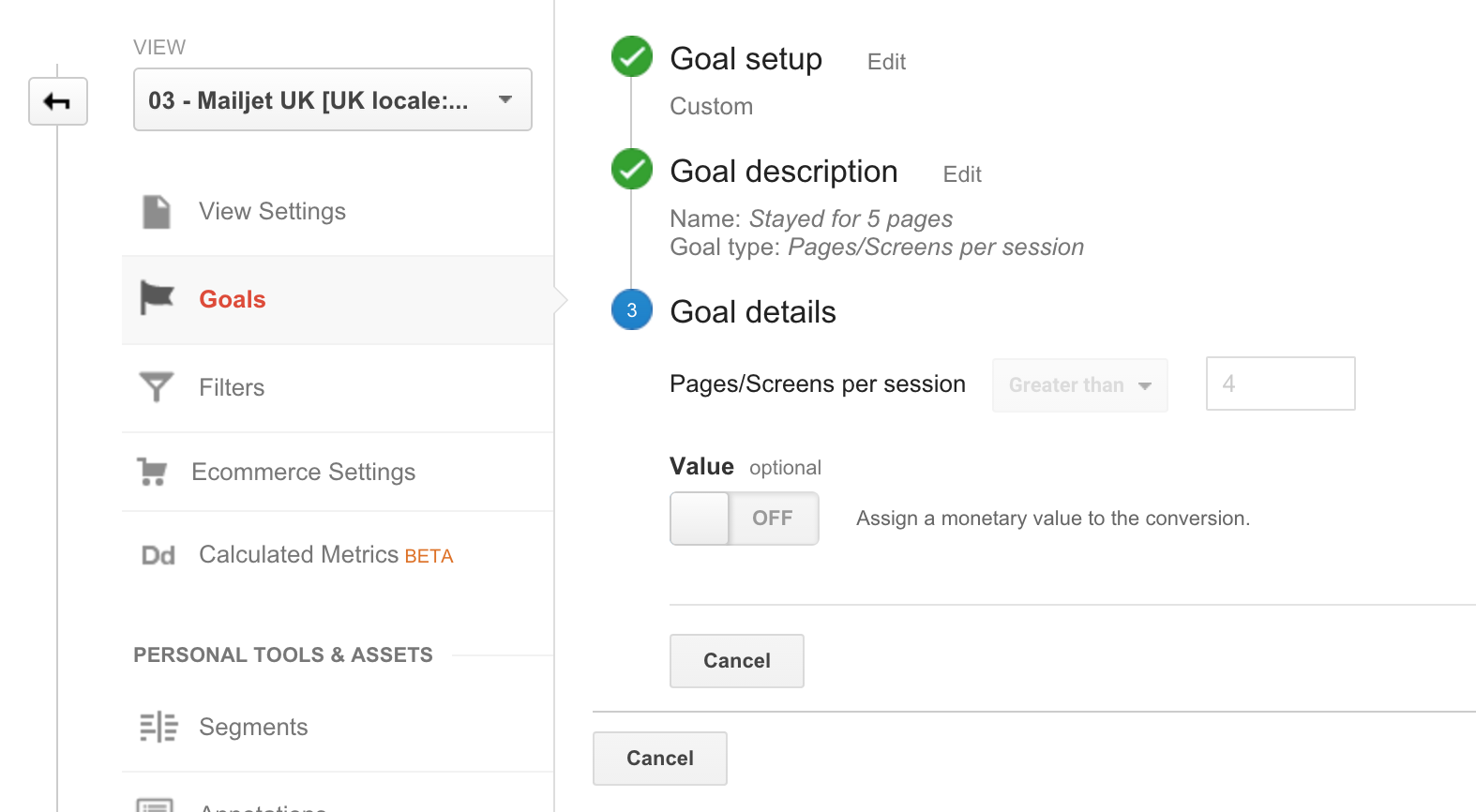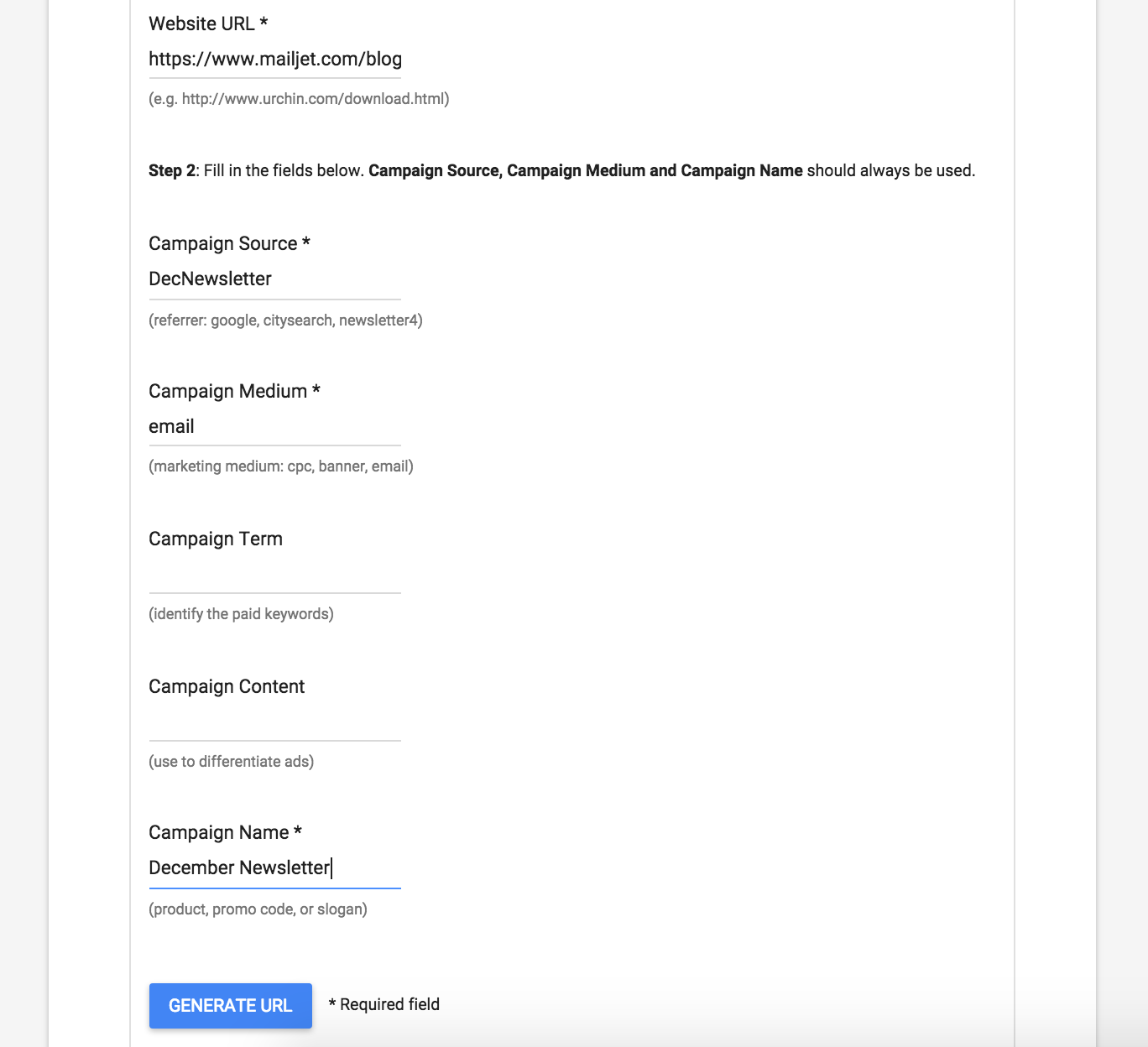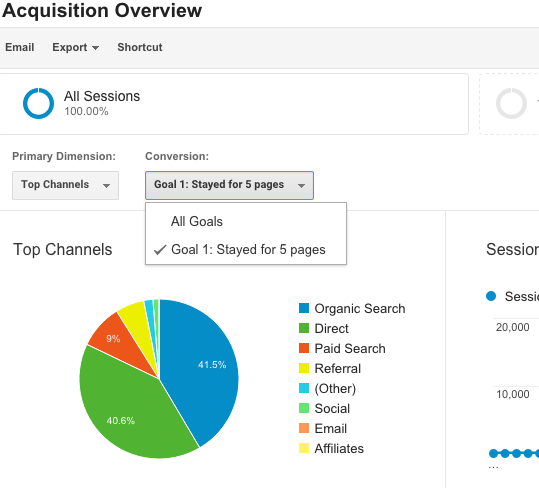Product
Tracking conversion with Mailjet + Google Analytics
Learn to track your conversion rate with Mailjet and Google Analytics in order to improve it. Find out how to get more leads today, GO!

PUBLISHED ON
The world of web analytics can be a pretty daunting place. It can often feel like your digital marketing efforts are being sucked into a black hole because you can’t track or find the right data to measure success. But it doesn’t have to be a frustrating or extremely technical process, though! If you aren’t already, start by defining and tracking your conversion goals using Google Analytics and your Mailjet dashboard.
Chances are though that you’ve currently got a Google Analytics set up or have worked with it in the past. There’s so much more you can pull from your account than just unique pageviews. You have event tracking, conversion goals, success events, profiles, filters and multi-channel funnels, to name a few.
Have you ever wanted to track which email contacts became customers? Which call-to-actions drove them to land on certain pages? How long they spent on your website? Which types of email campaigns are the highest converting?
This Flight School Friday, we’ll be concentrating on setting goals and tracking conversion with Mailjet and Google Analytics. Be sure to collect all the credit you deserve by setting goals in Google Analytics before you hit send and seeing how they perform post-campaign.
Want to define your email strategy to win customers over this holiday season? Check out Mailjet’s Holiday Email Toolkit.
Table of content
Setting up conversion goals in Google Analytics
The first step is to determine what a conversion means for you. Depending on your business, a conversion can really range from a variety of things - it can be anything from a sale to a white paper download. If you’re new to this, check out our five steps to finding email marketing goals.
Here are four areas you can set goals for when it comes to tracking your visitors.
URL Destination - This one’s quite self-explanatory. If a user visits a specific landing page after taking an action, you can then use that URL as goal conversion. Meaning when a user reaches a specific URL then you have reached your goal.
Example: You’ve sent an email announcing a new partnership. You want to track how many users click-through on your email’s main call-to-action and land on the partnership landing page.
2. Visit Duration - Here you can track how long visitors from specific campaigns spend on any individual page. This is quite key if you have a content rich website like a blog, so you can track your readership.
Example: You’re curious to see what is driving your customers to your blog. Is it because you write enticing call-to-actions? Are your blog posts actually informative and engaging? You decide to track visit duration on your blog to see how long readers are staying and how much content they’re consuming.
3. Pages Per Visit - Setting up this goal you track how many pages each visitor goes through on your website after landing from individual campaigns.
Example: Gauging how effective your website’s user-flow by encouraging visitors to browse your website further. Set a goal of tracking users who browse more than 4 pages on your website and see what percentage of visitors convert through this goal.
4. Event - Event tracking is probably the most powerful attribute for tracking your users. With Google Analytics Event tracking you can identify individual actions by users.
Example: You can track such metrics as: downloads, customer sign-up, video views and clicks on specific buttons. If you’re generating revenue through your website then this one’s a must!
You can have up to 20 goals per Google Analytics profile (4 goal sets, and 5 goals per set). Here’s a brief step by step guide on how to set up these goals on Google Analytics.
Below’s an example of a setting I created to track campaigns that drive the users to browse beyond initial landing page. The goal is reached if the user browsers more than four pages per session:

Adding Google tracking links in your Mailjet campaign
This part is easy. We’ll be creating a trackable link so we can see how certain actions are tied with certain types of content. We’ll then use these metrics to identify if we’ve achieved our goal. To help you visualize this, we’ll set this up for a fake December Newsletter where we will link our call-to-action button to a recent blog post.
Start off by heading over to Google’s URL Builder and filling in the form with relevant information. Google’s even included examples so you don’t have to worry about any confusion.

Here’s the link I created using the handy URL builder tool:
https://uk.mailjet.com/blog/this-was-written-just-for-you/utm_source=DecNewsletter&utm_medium=email&utm_campaign=December%20Newsletter
Now simply add this link to one of your call-to-action buttons in Passport, Mailjet’s drag and drop template builder:

How to analyze Google Analytics conversions from your Mailjet campaigns
Now that you’ve set up your goal to track how many users browse more than four pages on your website from specific sources,you can start having some fun analyzing the results! To view the metrics on your Google Analytics dashboard, simply go to ‘Acquisition’ where you’ll find an overview of traffic from different sources and can see how your goal(s) have converted:

On this page you can drill down further to find different ‘Sources’ from each channel. In this case, we’ll drill down into “Email”. Then, set your ‘Primary Dimension’ as ‘Source’ and you will see the name of each trackable URL. And here’s the one we made earlier:

Now go out there and create goals and trackable links for your next email campaign and see how well you convert your contact list into customers.
What goals do you currently have set up or will you be setting up on your Google Analytics? Share your tips with us!
Related readings
Popular posts

Top email marketing trends for 2022
To the outsiders, it can sometimes feel like email hasn't changed that much since it was created. Maybe this is why some are so persistent in...
Read more

Reducing email’s carbon footprint
When it comes to protecting our planet, every step toward cleaner practices – small and big – counts. So, what if we told you that emailing, as clean and green as it seems...
Read more

Marketing calendar 2024: Dates you shouldn’t miss this year
We finally got through 2023 (phew!) and Q1 is just around the corner. It’s time for you to start scribbling down your New Year’s Resolutions to make sure we start the year with a bang. If you’ve found your way here, we’re guessing that’s because creating a winning...
Read more



